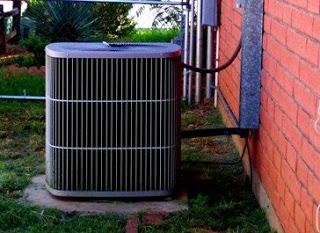
What Size AC Do I Need? How Many Tons?
Whether you want to install a ductless mini split to cool a single room or are replacing a central air conditioning unit which cools the whole house, it is good to remember that bigger is not necessarily better. An air conditioner that is bigger than is required will not only have a higher initial cost but could cost you more by short cycling. Of course, a unit that is too small can quickly run up your energy bill by running constantly in a futile attempt to keep the area comfortable.
Manual J
Manual J is a professional method for calculating residential cooling loads, created by the Air Conditioning Contractors of America. It takes into account many factors, including the state of your insulation, height of your ceiling and square footage among others.
Homeowner Calculations
Most do-it-yourselfers don't have access to Manual J, nor to the sophisticated tools available to professional installers. Still, armed with a tape measure and hand-held calculator, most people can make a relatively accurate estimate of their cooling needs. The process is simple--measure the length and width of the room to be cooled and multiply the two factors to get the square footage of the room. Repeat the process for each additional room that is to be cooled and add all of the sums together to get the total square footage that requires cooling. You can then compare this square footage to a BTU chart such as the one found on the Energy Star website:
| Square Feet | BTUs per Hour |
|---|---|
| 100 - 150 | 5,000 |
| 150 - 250 | 6,000 |
| 250 - 300 | 7,000 |
| 300 - 350 | 8,000 |
| 350 - 400 | 9,000 |
| 400 - 450 | 10,000 |
| 450 - 550 | 12,000 |
| 550 - 700 | 14,000 |
| 700 - 1,000 | 18,000 |
| 1,000 - 1,200 | 21,000 |
| 1,200 - 1,400 | 23,000 |
| 1,400 - 1,500 | 24,000 |
| 1,500 - 2,000 | 30,000 |
| 2,000 - 2,500 | 34,000 |
These base BTU numbers will need to be adjusted to account for the specific features and circumstances of the room you are looking to cool.
High ceilings: If your room has a ceiling that is 10 feet high, you will need to increase your BTU total by 10 percent.
Hotter climates: If the climate where you are located is consistently hot or humid, add 10 percent to your BTU total.
Number of occupants: If the room you are looking to cool is usually occupied by more than one person, add 10 percent for each additional person. For example, a room typically used by four people will need a 30 percent higher BTU total.
Sun exposure levels: Does your room typically receive constant sun exposure during the day? If so, add 10 percent to your BTU total. If it does not receive any sun exposure, subtract 10 percent instead.
Kitchens: Add 600 BTU to your total to account for a kitchen.
Questions? Call GMC Air Conditioning Services
Sound complicated? It can be. At GMC Air Conditioning Services, LLC, our AC professionals are NATE Certified and understand the complexities of air conditioning systems. If you’re looking into a replacement, call our experienced team at (954) 973-5980.







